Table of contents
Digital Music Streaming Overview
Digital music streaming accounts for 85% of the market in 2024 and that level of adoption is not getting any smaller. Spotify, Apple Music, Amazon Music HD, TIDAL, Qobuz, and Deezer are the preferred gateway drugs for hundreds of millions of consumers around the globe and there is pretty much something for everyone at this point.
Classical music fans received a huge boost with the launch of Apple Classical Music (after it purchased Primephonic which served as its foundation) and there is always Idagio which offers a 14-day free trial as another option.
Not everything is hunky dory in the land of hi-res streaming, however, with TIDAL suffering a number of setbacks in 2024 including a recent announcement that it would be laying off almost 25% of its staff.
We have covered the TIDAL/MQA saga since 2020 and there is no question that it was not a successful partnership.
The decision to add support for millions of Hi-Res MQA tracks was treated like a watershed moment for the platform and those in the consumer A/V press who treated it like the most important moment in high-end audio look rather ridiculous today — and that was before TIDAL moved to replace the MQA files with FLAC versions in the aftermath of MQA’s financial issues and subsequent sale to Lenbrook Media Group.
Starting on July 24, 2024, TIDAL subscribers were also no longer able to access music in the MQA or Sony 360 Reality Audio (360RA) formats.
Anyone using Spotify Hi-Fi? That has yet to materialize after years of promises.

Why Do You Need a Digital Music Streamer?
The vast majority of consumers use their smartphone to stream and that’s a perfectly valid way to go.
Streaming does drain your battery. It gets even worse if you utilize a Dongle DAC to drive a pair of headphones or a pair of active loudspeakers on the desktop.
Another drawback is that the DAC (digital to analog converter) in your smartphone does not compare favorably to the DAC inside of a dedicated music streamer.
You also require a better quality system downstream to truly appreciate the improvement that a music streamer can make.
One can spend anywhere from $99 to $20,000 on a music streamer with very little effort — but does it make sense to do so?
There isn’t a single affordable digital music streamer that can do it all and offer support for every platform, casting technology, MQA, DSD, or 32-bit/384.
That dilemma also applies to high-end digital streamers as well. A high price does not guarantee support for every streaming service like Qobuz or TIDAL, or support for AirPlay 2, Chromecast, TIDAL Connect, Spotify Connect, Dolby Atmos Music, Bluetooth aptX or aptX HD.
For example, if you want to stream Dolby Atmos Music (aka spatial audio) via Apple Music, then your only option is currently the latest Apple TV 4K.
Tip: How (and Why) To Listen to Dolby Atmos Music on Your Receiver, Speakers or Soundbar
One thing that can make or break a network streamer is the mobile app. While virtually all network streamers allow you to connect a phone via Bluetooth and play your music back over speakers, a good mobile app allows you to access music from multiple streaming services, internet radio stations, or even a local digital music collection from a single app, using a wired or Wi-Fi connection from the network streaming box to the internet.
This allows you to skip the unwanted interruptions and compression artifacts of a Bluetooth connection.
There were a number of new digital music streamers released in 2024 that we have only had a limited amount of experience with and until we formally review them they can’t make the list. Bluesound’s revised NODE Series (the previous iteration made this list in 2023) are on our review roadmap for Q1 2025.
As streamers become more affordable, even audiophiles have become wise to the reality that spending thousands on a network music player does not make a lot of sense anymore. Keep in mind, one can always improve the sound quality of an inexpensive streamer with a DAC — which have also come down a lot in price.
Best Streamer Under $250

WiiM Pro Plus ($219)
Following this success of the $99 WiiM Mini and $149 WiiM Pro, the WiiM Pro Plus offers a number of significant improvements that are worth the higher asking price.
The WiiM Pro Plus offers better DAC and ADC technology. It features an AKM 4493SEQ premium DAC with support up to 768kHz PCM, and DSD512, with PCM/DSD automatic switching. Meanwhile, its TI Burr-Brown Audio PCM1861 ADC supports up to 192kHz/32-bit digital output.
Compatible with AirPlay 2, Spotify Connect, TIDAL Connect, Qobuz, Amazon Music, Deezer, TunIn, iHeartRadio; the Pro Plus also sports a 10-band digital EQ, a graphic EQ and more.

You can stream YouTube Music, TV audio, radio stations, podcasts along with local content directly from your favorite Chromecast-enabled app.
In addition, Roon Ready and parametric EQ features have been added to the Pro Plus via firmware update.
Having spent a lot of time with the WiiM Pro Plus, there is a lot to like from a connectivity perspective. There is an uptick in midrange resolution, clarity, and timbral accuracy that is very appealing at this price point.
You might not get a fancy looking touchscreen, but how much time do you really spend on your knees squinting trying to use one when you can control everything from your smartphone or tablet?
Pros:
- Very affordable
- Excellent control app
- Support for TIDAL Connect, Spotify Connect, and AirPlay 2
- Connectivity options
- Clear and accurate sounding
Cons:
- No touchscreen
- WiiM Ultra is only $110 more
Where to buy:
Best Streamer Under $500

WiiM Ultra ($329)
Possibly the most popular network music player available right now with enough reviews to keep one busy for weeks; we advise just reading what we have to say and know that 4 of us currently use one and think it’s pretty great minus not supporting Apple AirPlay 2.
All of WiiM’s streamers, including the entry-level WiiM Mini, support lossless and high resolution audio at a minimum of 192kHz/24-bit (depending on the source) with gapless playback for seamless track-to-track transitions.
All WiiM streamers except the WiiM Ultra and WiiM Amp Pro support Apple AirPlay 2 and Siri voice assistants. All WiiM Streamers currently work with Alexa as well.
The WiiM Ultra also offers a high-quality 3.5″ full-color touchscreen, but does so at about a third of the cost of the Cambridge Audio streamer.
The color screen isn’t all that’s added to the WiiM Ultra. Like the Zen master, it is truly “one with everything.” The WiiM Ultra includes an upgraded DAC and CPU. The DAC is the highly rated ESS Sabre ES9038Q2M DAC with decoding of up to 32-bit/384 kHz digital files or data streams.

The CPU is a quad core Cortex A53 for super smooth operations. In addition to analog, fiberoptic and coax digital inputs, the WiiM Ultra includes an HDMI ARC input for connection to a TV (2-channel PCM, 2-channel Dolby Digital or 5.1-channel Dolby Digital).
The one surprising omission from the WiiM Ultra is that it does not include support for Apple AirPlay. This is something we find in all of the other WiiM Streamers except the WiiM Amp Pro, which is also a new model this year.
AirPlay support is also available in most competitive products. WiiM reps have told us that fewer than 11% of their customers ever use the AirPlay feature. Nevertheless, it is a checklist item and something that is important to some users who favor the Apple ecosystem.
Tip: Which WiiM Network Streamer Should You Get?
All of those features and connectivity options would be for naught if the WiiM Ultra didn’t sound better than the competition. The music streamer offers a rather clear sounding presentation that is just neutral enough to make it ideal for all kinds of amplification and even active speakers. Although we prefer it with a warmer sounding tonal balance overall.
The app is comprehensive and easy to use with access to almost every major streaming platform available.
Almost impossible to go wrong with the WiiM Ultra — unless you must have AirPlay 2 support.
Pros:
- Possibly the best network music player under $1,000 for only $329
- Control app offers comprehensive platform and setup support
- Support for TIDAL Connect, Spotify Connect, Alexa,
- Connectivity options including MM phono and HDMI ARC
- Supports up to 32-bit/384kHz PCM
- Clear and accurate sounding
Cons:
- Does not support Apple AirPlay 2
Where to buy:
Best Streamer Under $1,100

Cambridge Audio CXN100 ($1,099)
Does it make sense to spend an additional $700 on the CXN100 over the WiiM Ultra? We think that’s a fair question and it also makes us wonder what makes the new Cambridge EXN100 worth $700 more?
Both are powered by the StreamMagic Gen 4 streaming module and use the ESS Sabre DAC. The more expensive EXN100 features an upgraded analog output stage and adds a HDMI eARC output.
Having not listened to the EXN100 yet, we can’t say how much of an upgrade it represents.
So what do we like about the CXN100?
Being a Roon-ready endpoint is a great feature but that’s only relevant for those who want to be locked into that specific ecosystem. Cambridge offers the StreamMagic app for iOS and Android which works just fine with streaming services like TIDAL, Spotify, or Qobuz. The CXN100 has a very readable display which is sufficient for viewing album art, and the app is quite responsive.

From a connectivity perspective, the CXN100 offers USB (Type A and B), TOSLINK optical, and S/PDIF coaxial digital inputs which means that you can run a CD player or other legacy digital device through the network player and utilize its 32-bit DAC.
The unit also features Coaxial, optical, balanced XLR, and RCA line level outputs.
Cambridge has also made changes to the DAC and analog output stage which are rather audible compared to the CXN V2 and MXN10 streamers.
With support for UPnP, TIDAL Connect, Spotify Connect, Chromecast and Apple AirPlay 2, the CXN100 offers a comprehensive way to connect to the world of digital streaming.
The unit is easy to setup, and proved to be very reliable during many hours of listening.
The “warmish” tonal balance of the previous iteration has been replaced with something that is more neutral sounding; with that comes a more open sounding presentation with greater detail and larger soundstage.
The CXN100 is a very clear and precise sounding music streamer that offers superior pacing and a more defined edge to everything. If you loved the relaxed sounding presentation of its predecessor, the leaner and more energetic sounding CXN100 might not be your cup of tea.
In the context of warmer sounding amplifiers and loudspeakers, the CXN100 works brilliantly.
What does it offer sonically that the WiiM Ultra does not? An enhanced sense of space, superior detail retrieval, and a higher level of resolution. Neither is particularly warm or overflowing with texture – although that can be changed rather dramatically with a DAC or amplifier that delivers that.
Pros:
- Precise, articulate and highly resolved sounding
- Support for TIDAL Connect, Spotify Connect, Roon, and Apple AirPlay 2
- HDMI ARC
- Can be used as a hi-res DAC
Cons:
- Control app is good but not as comprehensive as the WiiM Audio app
- Tonal balance is decidedly more neutral sounding than its predecessor
- $1,099 versus $329 for the WiiM Ultra
Where to buy:
Related Reading:






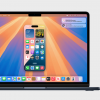





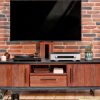













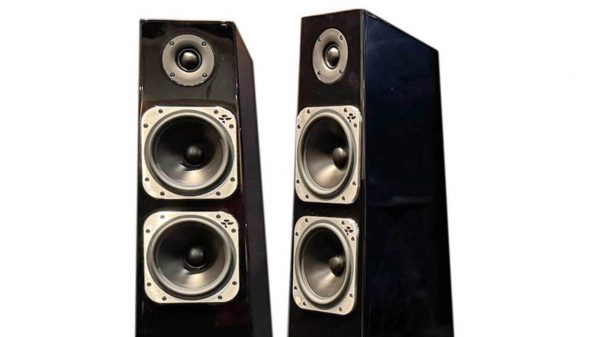
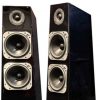

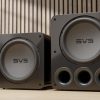
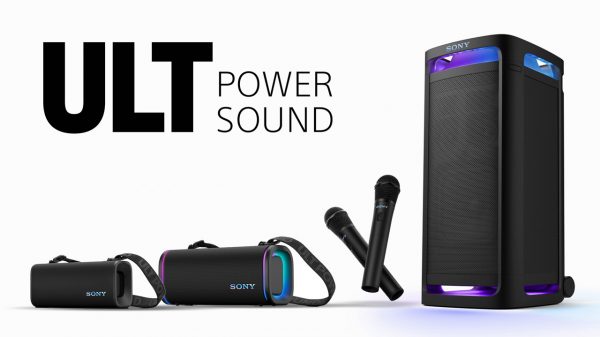
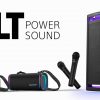













ORT
February 27, 2022 at 3:41 pm
I own two and have given as gifts to friends and family 4 more of Grace Digital’s excellent Grace Link.
$179.99 and every time they get in they are soon SOLD OUT. The last time I bought a couple, Grace Digital said they had 500 hundred arrive and they sold out in a day or two. Why? Because this is an excellent product that makes (Buddha but I loathe this term) “streaming” easy and affordable.
I have no doubt that Andover Audio’s device is nice, I have three of their Spinbase turntable platorms and have given away one to my daughter and her family. They make an excellent product.
At this moment I am listening to one of my all-time favorite albums – The 50th Anniversary Edition of George Harrison’s “All Things Must Pass”. It is being sent from one of my Grace Links to an affordable DAC my S.M.S.L. (no stoopid MQA allowed!) and from there to an S.M.S.L. SP200 and then to a pair of Sennheiser HD6XX from Drop. What does this more than affordable, more than competent set up sound like playing George Harrison?
George Harrison.
People do not want to (Paraphrasing Alert!)”…strain at a bit to swallow a lie”. They desire to listen to the soundtrack that IS their lives.
The Grace Link does that. That is really all any audio device need do. I do not count bits. I do not look in on the sampling rate. I do not want MQA. I could give an airborne intercourse about what I shall now call Romper Roon Ready.
What I do want is to see the Album artwork (if available) and the artist’s name along with song and album title. I am now well in to being a seasoned citizen and on weekends I often go and mount TVs for friends and family. I even did one for a Buddhist Temple a couple of years back as a friend is Buddhist. I also set up modest home theaters for a great many folks. I do not charge people as it is a pleasure being of service to these folks.
What this has shown me is that people, young and old alike, want simplicity in their entertainment. They want to push a button and turn on their personal musical WayBack Machine (Mr. Peabody and Sherman!) and hear their music. They want to see the artwork and associated information if available. They don’t give a hoot about the sampling rate, the number of bits or what frAudiophile (NOT you guys and you know that) feeeeels about a circuit that neither they nor said frAudiophile understand.
Push “ON” button of WayBack Machine, select preset and volume – ENJOY! My older brother used to be more in to audio and he is now on his third AV which I have given him. He had some problems with the internet tuner and when I visited him and his wonderful wife, I fixed it and showed him how to do so. Then to make certain that would never happen again I sent them a Grace Digital Grace Link to hook into one of the digital (coax) inputs.
He and his wife really like it. I also sent them two of Grace Digital’s stand alone radios for use in other rooms.
Trust me on this. I am not come to make waves, I am here to simply state what I know. Exempli gratia? I used to own and use a Squeezebox Radio. It was great but is now kinda sorta OOB. Out of Bidness. Some folks will go on and on (kinda like I am doing here, LOL!) about how the Squeezbox was “light, airy, full of presence, blah, blah, blah… ad nauseam. I call B.S. it is just a box of parts and has no genie inside. It either works as advertised or does not.
I am certain every thing you mention in your list does just that. So too does the Grace Link. I think, not feeeeeeeeeeeeeel, it is as good as any device you noted above and far more affordable than many and easier than all of them.
Do I have to order one (when they are available again – SOLD OUT!) and send it to you? I may just do that. I know some of the folks at Grace Digital and have met them face to face. They are good people who work hard to make a fine product and sell it at a very affordable price.
Let me know, brother. By the belly of the Buddha, I can ramble on, eh? I do not expect this to make it to being posted but I do hope you do me the honor of reading it. I am sincere in my words and as they sang in “The Music Man”, “How can there be any sin, in sincere”.
In all ways and for always, be well.
ORT
Geoffrey Britain
April 2, 2023 at 3:57 pm
I agree with much of what you say and I have an earlier Grace Link which I use in the Garage. Where we disagree is in your assertion that the Grace Link is sound wise the equal of any of the above mentioned units. The overall fidelity of your system will determine whether the increased fidelity of the more expensive units is detected.
Ian White
April 2, 2023 at 4:11 pm
Geoffrey,
Having never listened to the Grace Link, I can’t comment on its performance. Having listened to everything in our guide, I would agree with what you write 100%.
“The overall fidelity of your system will determine whether the increased fidelity of the more expensive units is detected.” — 100% this.
Best,
Ian White
ORT
April 3, 2023 at 3:40 am
Well, to be honest I have never “listened” to the Grace Link but I have listened to music played by it. It sounds like music. Sinatra is Sinatra not an artificial “Simnatra” ala Beatlemania…”Not the Beatles but an incredible simulation” mind you, but to be frank, the real Frankie.
I listen via headphones and have two such set ups with the Grace Link. I have Grace Digital table radios too. I like the radios as they visually remind me of ’60s table radios and again, I hear music.
But yes, I under stand what you are both saying. I think speakers are probably the most important part of the equation but I could be wrong. I have Klispch for my two main listening/viewing areas. But NOT their subwoofers. I do not much care for those, especially so the front firing ones. YUCK!
ORT
BobPM
February 27, 2022 at 4:32 pm
If you are not looking for it to be a DAC, then the key to choosing the best streamer is the software and the extent you believe that software will be maintained and upgraded into the future. I am a fan of the Bluesound OS since it is comprehensive in its access to services (unlike ROON that only has two streaming service choices), has a intuitive interface, and is with a company that has been around awhile and appears committed to maintaining the software.
I will reserve judgment on how the streamers actually “sound.” A competent DAC should clean-up and problems with the digital signal. This is one of those areas where sound quality differences are likely pretty subtle.
Ian White
February 27, 2022 at 5:03 pm
Bob,
BluOS is excellent. I’ve used it daily for almost two years and it only continues to get better.
I have 5 different streamers at home and they all sound “different” but I think that has more to do with the design of the output stage and choice of DAC chip than anything else.
Best,
Ian White
Bob
February 28, 2022 at 5:03 pm
Couldn’t agree more. The sound of the streamer, in my opinion, is mostly dependent on the DAC/output and not the streamer itself. I use an excellent Schiit DAC that I prefer over the MQA enabled internal one on the Node.
My real point is that steamers should be evaluated more as software than hardwware. Is it functional, stable, and what are the features.
Ian White
February 28, 2022 at 5:36 pm
Bob,
The Schiit DACs are really nice. And I have zero use for MQA.
Ian White
GordM
March 4, 2022 at 1:36 am
Likewise…I have used BluOS since 2017, and I should add that for a computer audio neophyte like myself, it was great to have available Bluesound’s excellent support, which is unfortunately now getting somewhat less responsive to both increasingly strong sales and the fact that it is handling all of NAD’s support issues as well.
I just recently acquired the new NODE which has a distinctly improved physical interface, although I don’t use that so much since my iOS devices are everywhere. I have lost count of how many updates Bluesound has issued in the past five years.
Be forewarned though, my 2017 Node 2 bricked and I was informed that the repair would be too costly to consider and the manufacturer offered me the new NODE at a discount, which I went with. Hopefully the defective power supply problem is a thing of the past. Meanwhile, avoid buying a used Node 2 because it probably will be a doorstop before long.
I also have a Nose 2i expansion card in my C388 integrated amp for a backup 🙂
I tried out a Cambridge EVO 150 a while ago which was a terrific amp, but I ultimately rejected it due to the cheesy app and returned home to BluOS.
GordM
March 4, 2022 at 1:37 am
Ditto re MQA. I have a handful of MQA files on my drive…whoopdedoo
Drew
May 20, 2022 at 10:10 pm
The streamer does matter a bit. The typical way to hear an amp is to use a full range speaker without a driver. The typical was to hear a dac or streamer is to use headphones. You can follow the logic for order of importance.
Stéphane
February 13, 2023 at 7:25 pm
Hello ! Will a Bluesound node plug into my Sugden A21 se signature will give me great sound using tidal mqa ? Or should i look for a better one like the CXN V2 , arcam st60 , or a Lumin…? Thanks a lot !
Ian White
February 14, 2023 at 12:24 am
Stephane,
It really depends on the tonal balance of the Sugden (great amp BTW) and the speakers. The NODE is rather warm sounding. The CXN V2 from Cambridge Audio is a really strong choice.
Best,
Ian White
Stéphane
February 14, 2023 at 1:36 pm
Thanks a lot ! Ecoustics rules !!! 👌
Stéphane
February 14, 2023 at 7:17 pm
I have just read that the CXN V2 does not fully support MQA masters from Tidal…by the way my Loudspeakers are Kudos C20 ( Sugden + Kudos + all Chord company cables ) Now is my only choice under 2k the Bluesound…?
Ian White
February 14, 2023 at 11:27 pm
Stephane,
MQA support should not be the benchmark for a streamer. I use TIDAL all the time and I don’t think the differences are that huge. The NODE is really good but I think the Cambridge sounds a lot better with most hi-res PCM tracks.
Why not use your phone with a Dongle DAC that supports a full MQA pack/unpack? Cheaper and something you can also use with headphones.
Best,
Ian White
Daron
February 27, 2022 at 8:54 pm
What about the Wiim Mini for $99? Stream Qobuz and everything else at 24/192 without buying a PC or spending 500+, and an expected firmware update to output optical at 24/192 to an external DAC. Shouldn’t cost thousands just to use a streaming service on your gear.
Ian White
February 27, 2022 at 11:44 pm
Daron,
I have one. It’s on our to-do list for early March. Along with another 20+ reviews coming in the next 2 weeks.
It’s decent. Not awesome but certainly ok from the digital output.
Ian
Steven Denfeld
March 8, 2022 at 9:27 pm
The field of streamers is a confusing one; too many devices focusing on wireless and other over complicated future-fi’d hoopla. I want a simple device that plugs into my Ethernet and streams Qobuz at its highest resolution into my DAC while I remote-control it from my iPhone. I have zero need for multi-room wireless, no Bluetooth, no file storage, just simple high quality streaming into my system. The Andover is hardly enough but the Node, excellent though it may be, is maybe too much. Anything in between? A Raspberry Pi feels a little too project-y at this particular point in my life.
Ian White
March 8, 2022 at 11:17 pm
Steven,
That’s a fair question.
I own both the Songbird and NODE and consider the Bluesound streamer to make the most sense for me personally.
I don’t think there is a better option below $550 if you don’t want to build your own. Sonore get rid of the microRendu which was quite solid once it was properly configured.
Best,
Ian White
Steven Denfeld
March 8, 2022 at 11:23 pm
Thanks for the reply, Ian. Seems there’s a sizable hole for some manufacturers to fill but they’re all too busy chasing the not-quite-there promise of wireless.
Ian White
March 8, 2022 at 11:39 pm
Steven,
I think Andover or Schiit Audio are the most likely to fill that hole. I’ve heard rumors about a forthcoming one from Schiit. We will see.
Best,
Ian White
Love and Japan
December 23, 2024 at 3:36 pm
As an IT guy who works with computers for a living, I am totally uninterested in these media streamers, because I know that anything with an operating system and a screen is disposable and will not stand the test of time like my 70s, 80s, and 90s components. I wish the market would push back against this crap and force companies like NAD (to name one) to keep doing what they’re best at (and it’s not screens and operating systems!).
The “simple device” that I use for streaming is a 2015 Macbook Pro, sending the optical out to my high-end DAC and separates, and IMHO this is the way to go. I can stream Spotify or my collection of lossless FLAC files, and when the Macbook wears out I’ll find another computer with digital outs to use as a source. My already-vintage components will never be obsolete.
Ian White
December 23, 2024 at 4:15 pm
LoveandJapan,
If you look through our archive of reviews and news articles about music streamers, you will notice that a trend is emerging. If you look at our 2023 list versus the 2024 iteration — it’s clear that affordable network music players or streamers have taken over the market. People either use their smartphone, tablet, or laptop to stream from their platform of choice and that probably represents 85% of the market or more.
The high-end network player market is small, especially when you consider how many go directly from their wireless device to a pair of wireless speakers or headphones.
You are correct that these devices will become obsolete within a year or so and replaced with something new — because the industry survives based on gear fetishism.
I will say having used more than 20 media players over the past few years that there is a difference between the various models when it comes to the OS and overall sound quality. That the $300 WiiM Ultra offers 90% of the best players that are 10x the price speaks volumes about where this segment is headed.
Happy Holidays.
IW
Errol
March 9, 2022 at 11:31 pm
If you don’t mind a little DIY Raspberry Pi running MoOde Audio (or another similar OS) into your DAC of choice is hard to beat from a purely sound quality perspective. I spent $100 to set up an RPi streamer that runs into my CXA81 DAC I can’t justify paying 5x,10x more for a streamer. Seems like the DAC is a bigger factor in SQ based on my testing of the RPi into other DACs I own.
Alex Bennett
March 10, 2022 at 6:57 am
so few streamers offering Chromecast, but more than half the world using Android phones. What gives?
David Rogers
June 28, 2022 at 3:50 am
I have an audioengine B-fi that I like. But recently switched from apple to Android. The audioengine app works for tidal, but I can’t get radio options. All my searching and I can’t find a decently priced chromecast streamer, which is annoying because Spotify connect can see the audioengine B-fi from the app, so it’s a software not hardware issue.
I’m an inch away from a raspberry pi and schiit dac. But I am not certain that’s the direction I want to go. As a network admin by day, I don’t want to mess with crap at the end of the day. I just want to hit “cast” and go at the end of the day.
John
March 11, 2022 at 11:38 am
Any plans for testing windows systems I too am looking for a simple streamer that just works.
What about windows based systems. I look on amazon and I see little windows mini pc’s,I would also like to run app’s like Kodi,and a small pc seems like my best option,not mention that I already know how to operate it.
Ian White
March 11, 2022 at 12:02 pm
John,
Short answer is yes.
Ian White
Kellen
November 3, 2022 at 11:21 am
Good grief. Omitting the IOTAVX NP3 was rather dumb. I have the Node 2i, which is the same price, and the NP3 does a great job streaming while doing so much more (CD, radio, USB input, Bluetooth, etc.). Compatible with all major streaming services — I use it with Qobuz and love it. Plus the NP3 has an excellent remote. Best of all, I don’t have to keep going through the constant hassle up updating the BlueOS software like with the Node 2i, which honestly has made that unit a borderline nightmare. If I had to do it over again I would jettison the 2i in favor of a second NP3. Like I say, it was dumb to omit the NP3 from this list of music streamers.
Ian White
November 3, 2022 at 1:38 pm
Kellen,
Why do readers assume that we get to listen to everything in a category? It doesn’t make the list until we get to try it ourselves.
Best,
Ian White
Fred
May 9, 2023 at 10:36 pm
I am running Chromecast audio pucks around my home to play Roon/Tidal. Performance has been rock solid everywhere for me, but I’m considering attempting to upgrade on my large rig. I do have my nucleus hardwired as an option there via HDMI, but I prefer optical out on the Chromecast to my DAC to avoid using my AVR.
I have no need for DAC I streamer or a screen or software bells and whistles, I’m just not sure how much I need to spend to get appreciable improvement over digital out on Chromecast audio.
Is there a meaningful measurement spec for comparing streamer performance? Or is it more about sound coloration like with different DAC designs?
Thanks for the great listicle here.
Bryan
June 9, 2023 at 2:16 pm
Seems the Cambridge meets most of my needs. Just not comfortable coming up with a grand to buy it. Anything out there that can read/play a variety of formats from an external drive via USB or sd card AND has a display and is $500 or less. I don’t really care about streaming via Tidal, Spotify etc. I want to access all my digital files without having to use the computer. Smartphones don’t have enough storage. I have close to a couple of TB worth of music.
Amos
August 20, 2023 at 5:47 am
The NAD C658 streamer is for me the best streamer I’ve listened to. Compared to the above mentioned Cambridge Audio and Node. I’ve also compared it to the Rose 150b and the Nad sounded better by a mile.
Ed Brumbaugh
October 1, 2023 at 12:21 pm
Nice review, thank you. I’ve been looking at streamers for awhile now, but I’ve not pulled the trigger yet because I started streaming to my 2-channel system with my iPad Pro using Apple Music or the Qobuz app, and I don’t know what I’d be gaining by replacing the iPad with a streamer?
2-channel setup: I stream via USB into a Denafrips DDC to provide a cleaner signal to a Denafrips Venus II R2R DAC, then into a PrimaLuna EVO300 Tube Integrated Amplifier, and into a pair of Triton One Reference speakers … great sounding setup
Ian White
October 1, 2023 at 3:18 pm
Ed,
If you’re happy with the iPad Pro (using Lightning to USB?) into the Denafrips equipment (which is excellent stuff)…there is no reason to change.
A dedicated streamer with a good control app (Bluesound BluOS as an example) makes it easier to access all of your streaming platforms in one place and also stream using Wi-Fi or Bluetooth to other wireless speakers in the house if you have that kind of set-up.
You’re not using the DAC in the iPad so you’re really listening to the Denafrips Venus II which would provide a better listening experience.
Not everyone wants to use their smartphone as their dedicated digital player and want something that is a permanent part of their system.
Best,
Ian White